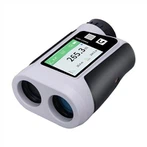How long is the life of a gas detector? The sensor is the key
Many people have a question when using a gas detector: how long can it last? Many users believe that gas detectors can be used continuously until they are completely damaged and unusable. In fact, is this approach correct?
In fact, the service life of a gas detector mainly depends on its main component - the sensor.
We know that there is no single sensor that can detect all gases and meet all requirements. The sensors used for various gases and environments are also different, and can be roughly divided into sensors for detecting toxic gas concentrations and sensors for detecting explosive concentrations of flammable gases.
1. The sensors used to measure the concentration of toxic gases are mostly electrochemical sensors, which work based on the principle of electrochemistry. The main factor affecting their lifespan is the electrolyte. After 2-3 years in an ideal environment, the electrolyte is consumed and the sensor can no longer function normally. Therefore, the service life of electrochemical sensors is 2-3 years.
2. Most sensors used to detect the concentration of combustible gases are catalytic combustion sensors, which have a lifespan of 3-5 years in ideal environments. In addition, the lifespan of gas detectors (including fixed gas detectors and portable gas detectors) is closely related to the concentration they are exposed to.
For example, if the sensor of an ammonia detector is continuously exposed to 2ppm ammonia, its lifespan is approximately one year (or 2ppm annual lifespan). If exposed to 4ppm ammonia levels, its lifespan is only six months. This makes ammonia gas sensors unsuitable for use in fertilizer plants, as the average concentration of ammonia is around 20-30 ppm.
Therefore, the main factors affecting the lifespan of sensors are also the more harsh the environment they are in, the shorter their lifespan. Secondly, the structure of sensors directly affects the use of gas detectors. Therefore, paying attention to the usage status of sensors is also paying attention to our own safety.






